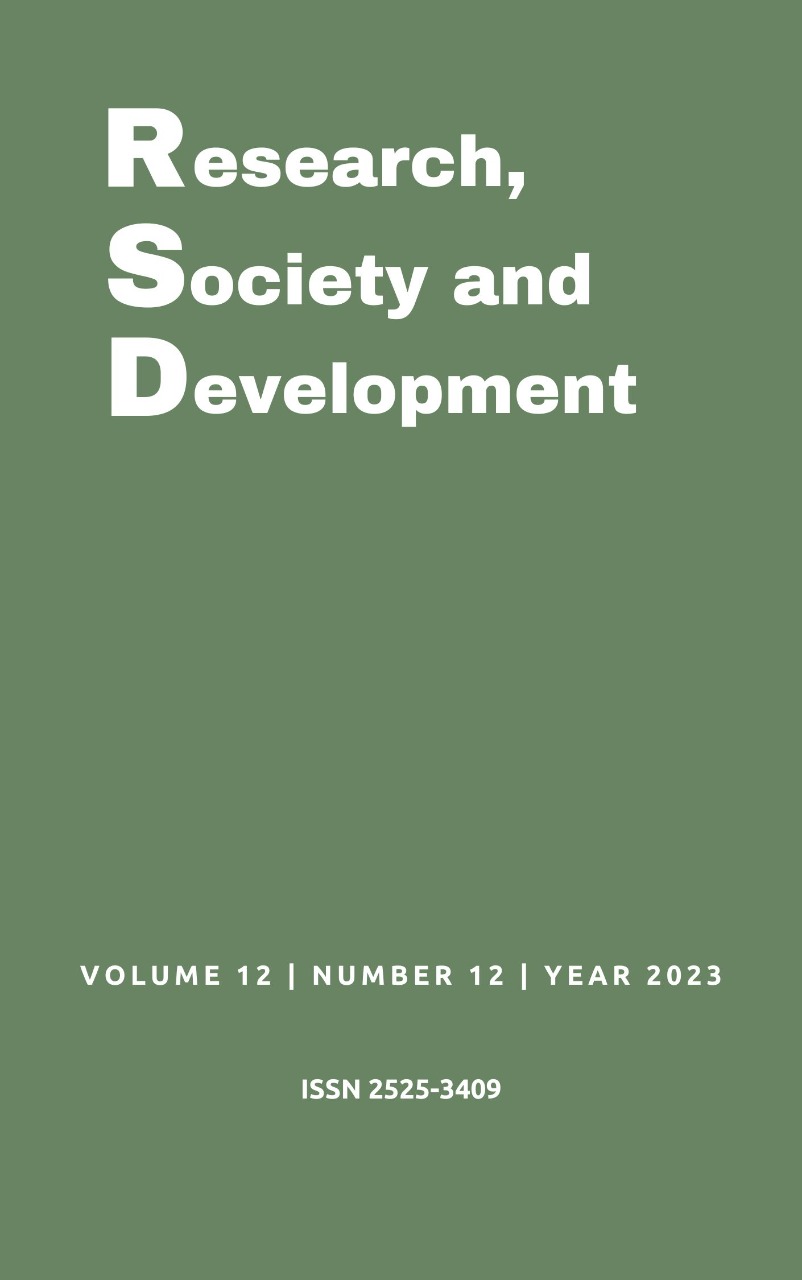Epidemiological profile of elderly people hospitalized due to stroke
DOI:
https://doi.org/10.33448/rsd-v12i12.44124Keywords:
Brain stroke; Elderly; Urgency; Emergency.Abstract
Factors such as a sedentary lifestyle, high-calorie diet, alcohol consumption and smoking lead to excess weight, systemic arterial hypertension, diabetes mellitus and dyslipidemia. Among the main complications resulting from comorbidities, cerebrovascular accident (CVA) stands out, conceptualized as the interruption of the blood supply, due to an extravasation or obstruction of the vessel. In the meantime, welcoming with risk classification is one of the potentially decisive interventions, based on the assumption of effective care. Given the above, the guiding question arose: What is the epidemiological profile of elderly people hospitalized with stroke? This is an observational and descriptive epidemiological research, based on a historical series, with a quantitative approach. The information was collected between the months of October and December 2022 through a search in the Ministry of Health database, DATASUS-TABNET. Initially, the criterion “ICD-10 morb list” was selected in the “available selections” tab, indicating the search for the descriptor “stroke”. Searches were carried out always considering the year of care, with a new procedure being carried out for each desired variable, such as total hospitalizations, age group and gender. The data are relevant to provide an overview of epidemiological behavior, risk factors that may be related to morbidity and mortality, and public hospital spending on this neurological dysfunction. Preventive measures targeted to the circumstances are necessary because through the individualization of local realities it is possible to effectively approach the complex local network, advocating even more notoriety as a major challenge to public health.
References
Abramczuk, B., Villela, E. (2009). A luta contra o AVC no Brasil. Com Ciência, Campinas. 109.
Amaral, D. et al. (2020). Tendência das taxas de mortalidade no centro e morte por acidente vascular oeste estratificado por sexo, no período de 2009-2018. Hadache Medicine. 11(51).
Andrade, L. A. et al. (2018). Elderly care in the emergency department: an integrative review. Revista Brasileira de Geriatria e Gerontologia. 21(2), 243-253.
Barbosa, A. M. L. et al. (2021). Perfil epidemiológico dos pacientes internados por acidente vascular cerebral no nordeste do Brasil. Revista Eletrônica Acervo Saúde. 13(1), 31.
Brasil. Ministério da Saúde. (2014). Instituto Brasileiro de Geografia e Estatística. Pesquisa Nacional de Saúde 2013: percepção do estado de saúde, estilos de vida e doenças crônicas: Brasil, grandes regiões e unidades da Federação. Rio de Janeiro: Instituto Brasileiro de Geografia e Estatística.
Campbell, B. C. V. & Khatri, P. (2020). Stroke. 396(10244), 129-142.
Carlos, M. J. (2017). Internação de idosos por acidente vascular encefálico no Estado do Rio de Janeiro, Brasil: uma perspectiva ecológica. Universidade do Estado do Rio de Janeiro, Faculdade de Ciências Médicas, Rio de Janeiro.
Costa, T. F. et al. (2015). Burden over family caregivers of elderly people with stroke. Escola Anna Nery Revista de Enfermagem. 19(2).
Darekar, A., Mcfadyen, B. J., Lamontagne, A. & Fung, J. (2015). Efficacy of virtual reality-based intervention on balance and mobility disorders post-stroke: a scoping review. J Neuroeng Rehabil. 12(46).
Duarte, E. C. & Barreto, S. M. (2012). Transição demográfica e epidemiológica: a Epidemiologia e Serviços de Saúde revisita e atualiza o tema. Epidemiol. Serv. Saúde. 21(4), 529-532.
Ferreira, K. C. M., Almeida, A. M. & Nascimento, A. P. (2018). Efeitos da terapia por realidade virtual em pessoas que sofreram um acidente vascular encefálico: revisão de literatura. Arq. Catarin Med. 7(3), 197-546.
Lenz, G. S. (2018). Acidente vascular cerebral: custos no SUS, no Rio Grande do Sul de 2007 a 2017. Monografia (Especialização). Universidade Federal do Rio Grande do Sul, Esteio.
Lima, C. M. G. et al. (2015). Características epidemiológicas e clínicas dos pacientes acometidos por acidente vascular cerebral. J. Health Sci. Inst. 33(1), 45-49.
Mamed, S. N. et al. (2019). Perfil dos óbitos por acidente vascular cerebral não especificado após investigação de códigos garbage em 60 cidades do Brasil. Revista Brasileira de Epidemiologia. 22(3).
Martin, G. B., Cordoni, L., Bastos, Y. G. L. & Silva, P. V. (2016). Assistência hospitalar à população idosa em cidade do sul do Brasil. Epidemiol Serviços Saúde. 15(1), 59-65.
Opas. (2018). 10 principais causas de morte no mundo. Brasília.
Ouchi, J. D., Lupo, A. P. R., Alves, B. O., Andrade, R. V. & Fogaça, M. B. (2018). O papel do enfermeiro na unidade de terapia intensiva diante de novas tecnologias em saúde. Revista Saúde em Foco. 10.
Santos, L. R. et al. (2015). The Use of Nintendo Wii in the Rehabilitation of Poststroke Patients: A Systematic Review. J Stroke Cerebrovasc Dis. 24(10), 2298-305.
World Health Organization. (2011). Global status report on noncommunicable diseases.
Downloads
Published
How to Cite
Issue
Section
License
Copyright (c) 2023 Alincio Marvio Sousa Barbosa; Saulo Barreto Cunha dos Santos; Eveline Machado de Aguiar Barbosa; Aline Alves Mesquita; Ana Carolina de Sousa Albuquerque Silva; Antônia Siomara Rodrigues Silva; Elisângela de Jesus Macêdo Araújo; Vanessa Sousa Tavares; Layanny Teles Linhares Bezerra ; Priscila da Silva Américo; Flávio Silva Rodrigues; Mônica Moura Oliveira

This work is licensed under a Creative Commons Attribution 4.0 International License.
Authors who publish with this journal agree to the following terms:
1) Authors retain copyright and grant the journal right of first publication with the work simultaneously licensed under a Creative Commons Attribution License that allows others to share the work with an acknowledgement of the work's authorship and initial publication in this journal.
2) Authors are able to enter into separate, additional contractual arrangements for the non-exclusive distribution of the journal's published version of the work (e.g., post it to an institutional repository or publish it in a book), with an acknowledgement of its initial publication in this journal.
3) Authors are permitted and encouraged to post their work online (e.g., in institutional repositories or on their website) prior to and during the submission process, as it can lead to productive exchanges, as well as earlier and greater citation of published work.

